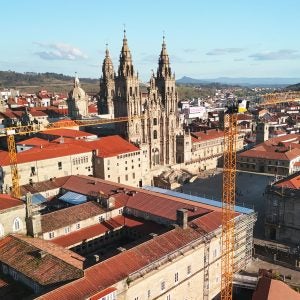The platform supplies natural gas to power generation facilities that power the Luzon grid in the Republic of the Philippines. The platform, operated by Shell Exploration Philippines BV, was shutdown for the flare tip change, but the down time held a sense of urgency as the pipeline only contained limited fuel to keep the power generation facilities operational.
Erickson Air-Crane brought in an S-64E, with a lift capacity of 10 tons (~9,000 kg) at sea level, to lift two large tool boxes onto the flare tip support arm, outstretched from the platform. The Aircrane was then used to remove the unserviceable flare tip, lift the new flare tip into place, and remove both tool boxes in two hours of flight time.
The Central Point, Oregon-based company owns and operates 17 S-64 Aircrane helicopters. The S-64F is powered by two Pratt and Whitney turbine engines generating a combined maximum takeoff rating of 9,600 SHP, which gives the F model an external lift capacity of 11.25t at sea level.
In the early 1970s the company developed an anti-rotation rigging system. The Erickson S-64 Aircrane is the only helicopter in the world with an aft-facing pilot station that allows full positive control of the aircraft while affording the aft pilot a full view of the load being placed.
Erickson Air-Crane worked with Vestas Wind Systems to lift wind turbine blades of 12 new V90-3.0 three-megawatt wind turbine generators on windy ridgetops near the mountain village of Ricigliano, southeast of Salerno and Mount Vesuvius, southern Italy.
The S-64F Aircrane flew with a 125m long line to deliver 36 blades along with three additional replacement blades, each measuring 44m long that will attach to the twelve wind turbine generators. Narrow and steep cornering roads offered limited access to delivery of wind turbine sections but prohibited the long trailer sections needed to bring the blades to each site by ground vehicles. The S-64F carried the individual blades from a central staging yard approximately 15km to each construction site. The versatility, precision, and strength of the S-64 Aircrane were ideal capabilities that allowed the lifts of the 7t blades to be completed in less than four days.
“For this latest wind turbine job, we worked closely with Vestas to craft a rigging system tailored to their individual blade type that provided a higher than expected level of stability and safety” says Mark Lumry, Project Manager for Erickson Air-Crane. “Sure, we have a strong and safe aerial platform, but it’s just as important to have good people with good ideas collaborating before work begins. The job progresses faster and safer that way.”
A significant concern when working with a helicopter is “rotorwash” or the forceful rush of air pushed downwards by the rotating blades of the helicopter as it lifts itself and the load. Lightweight objects need to be either secured or removed before the job starts as they will become hazardous projectiles when blown by the rotorwash during the lift process. “Our experience becomes very valuable to a customer with a lift job at a crowded city intersection, or across a school or neighborhood,” said Jerry Cramer, construction sales and marketing manager for Erickson Air-Crane. “We’ve been doing work in those kinds of areas for over 35 years. We know virtually all of the processes and procedures that need to happen in order for the job to happen safely and quickly,” he added.






